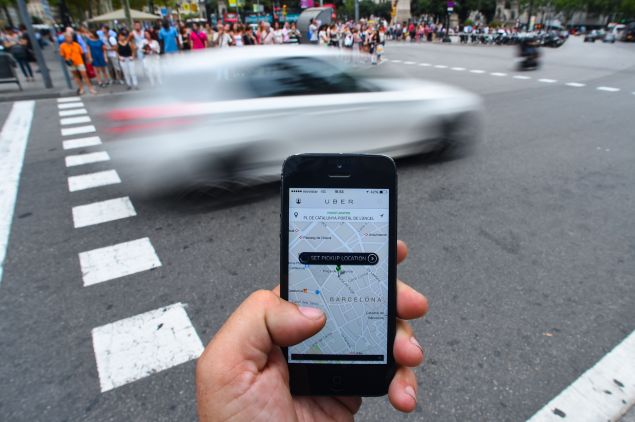
Uber (UBER) wants to get into the deep end of the pool.
After temporarily beating back City Hall’s attempt to cap their growth, representatives from the e-hail giant said this morning that its solution to surging congestion in Manhattan will be to grow their car-pooling capabilities. Uber also bashed the de Blasio administration for commissioning a four-month traffic study that, in their estimation, is too brief to properly gauge whether their booming fleet is contributing to the city’s congestion woes.
“A congestion study in a complex urban area like New York City is a substantial undertaking, involving public outreach, data collection, statistical analysis, and the evaluation of all possible transportation system improvements,” said Nicole Benincasa, an Uber senior policy associate, at a hearing hosted by Manhattan Borough President Gale Brewer. “A comprehensive, holistic approach like this could potentially take a year or more.”
Just before the hearing at Borough of Manhattan Community College, Uber released a analysis from the firm Steer Davies Gleave that underscored Ms. Benincasa’s contention. The firm said measuring congestion is “less straightforward than it might seem,” especially in New York City, criticizing a four month timeline that Mayor Bill de Blasio and Uber agreed to after the mayor moved away from a plan to immediately cap the number of for-hire vehicles in the five boroughs, regulating them like yellow and green taxis.
While the New York City Department of Transportation didn’t address Uber’s latest contention in their testimony, an official said for-hire vehicles like Uber are “not efficient,” particularly in the core of Manhattan. “Many taxi and FHV [for-hire vehicles] trips are relatively short and could be served by Citi Bike or bus. Also, if more people chose to travel by Citi Bike or bus, the buses and remaining taxis would be traveling even faster,” said Ryan Russo, the deputy commissioner for transportation planning and management at the DOT.
Average daytime traffic in Manhattan’s central business district has declined by 9 percent in the last four years, according to the DOT. Preliminary data from this year backed up this trend: speeds in May 2015 were down 7.9 mph compared to 8.2 mph a year prior, and down from 9.2. mph in 2010. The average running speed for a bus south of 96th Street declined by 5 percent during the evening rush hour in 2013 and 2014, according to the DOT. Mr. Russo suggested a drop in Manhattan bus ridership could be a result of these falling speeds.
At least two prominent traffic engineers, “Gridlock” Sam Schwartz and Charles Komanoff, have backed up the city’s past claims that for-hire vehicles–and Uber, in particular–are the likely cause of rising Manhattan congestion. Mr. Russo did not directly state this today, choosing instead to wait for a report due out in November.
In her opening remarks, Ms. Brewer suggested Uber could be a factor–but wouldn’t rule out additional tourist buses and trucks contributing to the Manhattan slowdown.
“For-hire vehicles can’t be the only reason,” she said.
Ms. Benincasa said Uber could cut down on congestion as uberPOOL, an app that allows riders to carpool, grows in popularity. ”While New York’s traffic problem predates Uber’s arrival in New York just four years ago, uberPOOL is an example of how technology can be part of the solution. At Uber, our vision is a future with fewer cars on the road,” she said.
She said that since the app’s launch in December, 1.5 million carpool trips have been completed in New York City. While the number sounds impressive, a top Uber official said that uberPOOL is in its relative infancy. He also couldn’t say what percentage 1.5 million represented of Uber’s overall city ridership.
“I want to make it big. It’s not big yet,” Josh Mohrer, Uber’s New York city general manager, told the Observer. “It’s small potatoes now. It’s just getting started. I think getting New Yorkers to share the backseat with a stranger–people are going to have to learn how to do that.”

